Morphogen Nutrition is one of the supplement industry's hottest brands, and a particular favorite of PricePlow. The formula covered in today's article exemplifies why.
We've made no attempt to conceal the fact that we're huge fans of Ben Hartman and his team. They consistently produce top-notch, cutting-edge products. Ben calls himself an "ingredient guy" - and as fellow ingredient guys, we're obviously fans.
Ben's twice been on the PricePlow Podcast – first in 2020, to discuss Morphogen's approach to supplement formulation, which is obviously the core work of a brand like his. He came back on in 2022 to talk about Morphogen's updated emphasis on packaging and label aesthetics.
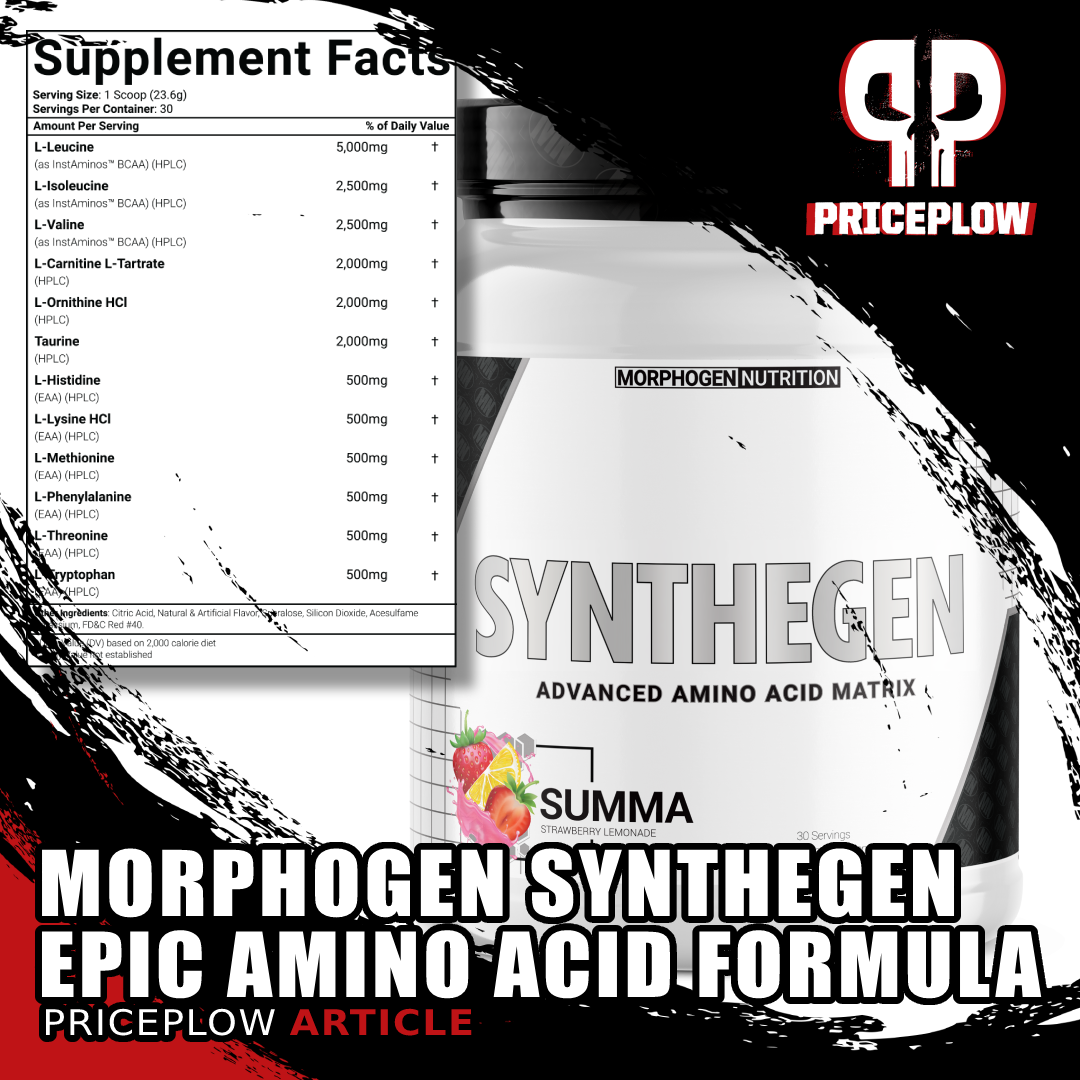
Just look at this amino acid formula! Morphogen Nutrition Synthegen is a powerhouse intraworkout (and/or recovery) supplement from top to bottom!
Give both episodes a listen, and we think you'll see why we like this company – they've got all their bases covered.
Introducing Morphogen Nutrition’s SYNTHEGEN
Today we're going to talk about Morphogen's SYNTHEGEN, their essential amino acid (EAA) supplement - and it's a big one, coming in at a 23 gram scoop in true Morphogen Takeover style.
Although EAA supplements are usually taken as intra-workout supplements (during workout), and are geared towards increasing athletic performance and endurance, Synthegen goes way further than that. It styles itself as a do-it-all formula, with significant benefits for recovery that go beyond what we typically see in EAA formulas.
The recovery bonuses are achieved through the use of taurine, carnitine, and ornithine, the latter of which is a non-essential amino acid that we love to see in products like this. Additionally, we're going to see far greater EAA doses than you're used to. If you're going big, this is the amino acid formula for you.
Let's get into how Synthegen does all this, but first, check the PricePlow news and deals on Morphogen Nutrition supplements:
Morphogen Nutrition SyntheGEN – Deals and Price Drop Alerts
Get Price Alerts
No spam, no scams.
Disclosure: PricePlow relies on pricing from stores with which we have a business relationship. We work hard to keep pricing current, but you may find a better offer.
Posts are sponsored in part by the retailers and/or brands listed on this page.
Morphgen Nutrition Synthegen Ingredients
In a single 1 scoop (23.2 gram) serving of Synthegen from Morphogen, you get the following, kicking it off with a whopping 10 grams of BCAAs:
-
L-Leucine – 5,000 mg (as InstAminos BCAA) (HPLC)
Leucine, one of the three branched chain amino acids (BCAAs), is considered the most effective supplemental amino for triggering an anabolic response. Morphogen of course gives you a full 5 grams -- which is often the amount of total BCAAs in competing products. As you can tell from this mighty-sized tub, Morphogen means business here.
Research has demonstrated that leucine can significantly increase muscle protein synthesis[1-3] by activating the mammalian target of rapamycin (mTOR).[4-6] This process helps prevent the breakdown of muscle tissue, known as catabolism, and ultimately helps maintain hard-earned muscle mass.
Some researchers even suggest that leucine supplementation may help counteract muscle wasting, a condition that leads to the loss of muscle tissue.[2]
As we age, our bodies may require higher amounts of leucine to maintain muscle mass.[7] If you're over the age of thirty, it may be wise to consider leucine supplementation as a way to support your muscle health.
-
L-Isoleucine – 2,500 mg (as InstAminos BCAA) (HPLC)
Although leucine is considered the most anabolic amino acid,[8] isoleucine also plays a key role in anabolic response by promoting glucose uptake and increasing glucose oxidation, which help provide energy for muscle protein synthesis.[9]
Studies have shown that the combination of leucine and isoleucine can have a synergistic effect on muscle protein synthesis. In a study of elderly individuals, supplementing with a combination of leucine and isoleucine increased muscle protein synthesis more than leucine alone.[10]
Another study in resistance-trained men reached the same conclusion.[11]
Isoleucine has also been shown to improve glucose tolerance and insulin sensitivity,[12] which is important for maintaining a lean body composition.
-
L-Valine – 2,500 mg (as InstAminos BCAA) (HPLC)
Valine is the third BCAA, and like the other two, plays an important role in protein synthesis and muscle metabolism.
If it's amino acids you want, then it's SYNTHEGEN. Tons of highly-dosed EAAs inside, but plenty of conditionally essential aminos that can improve performance too!
Like leucine and isoleucine, valine helps stimulate muscle protein synthesis and prevent muscle breakdown,[13-15] working in synergy with the other BCAAs, particularly with L-leucine, to promote muscle growth and improve exercise performance.[16-18]
Research suggests that supplementing with L-valine in combination with L-leucine and L-isoleucine can enhance muscle protein synthesis and improve muscle recovery after exercise.[19,20]
In addition, L-valine has been found to have anti-catabolic effects, which means it can help prevent muscle breakdown during periods of stress or intense training.[21]
Metabolizes into L-BAIBA
One cool thing we also like about valine is how it is metabolized into L-BAIBA,[22] a myokine (muscle messenger[23]) that activates numerous exercise-related biological functions, leading to effects such as increased fat oxidation and the browning of fat.[24]
Supplemental L-BAIBA is also sold as a diet ingredient named MitoBurn, which is in two other Morphogen Nutrition products - MorphoBurn and Somagen.
Next, we get into a few non-essential amino acids, before heading back into the EAAs (the three BCAAs above are just three of nine essential aminos that we must ingest through diet).
-
L-Carnitine L-Tartrate (HPLC) – 2,500 mg
Carnitine is a beneficial compound for human metabolism that can help improve blood sugar control, insulin sensitivity, and post-workout recovery.[25,26]
Its ability to transport fatty acids to the mitochondria within the cells, which are responsible for generating adenosine triphosphate (ATP), ultimately helps accelerate fat burning. This makes carnitine a great supplement for helping improve body composition.[27] Carnitine has also been shown to have a similar effect on glucose, leading researchers to consider it as a glucose disposal agent.[28]
"L-carnitine function. l-carnitine shuttles long-chain fatty acids inside the mitochondria by forming a long chain acetylcarnitine ester. The complex is then transported into the mitochondrial matrix by carnitine palmitoyltransferase I (CPT I) and carnitine palmitoyltransferase II (CPT II). The fatty acids are then broken down through the process of β-oxidation to deliver the 2-carbon molecules to the Krebs cycle, leading to the generation of energy under the form of adenosine triphosphate (ATP). In addition, by binding an acetyl group, l-carnitine can maintain the levels of Acetyl-CoA and coenzyme A, playing its buffering role."[29]
So carnitine supplementation can provide three key benefits: increased fat burning, better glucose disposal, and more energy for workouts and recovery.
In terms of recovery, carnitine has been shown to improve blood flow to muscle tissue, which promotes oxygen delivery and speeds up the removal of metabolic wastes.[29] Studies have also shown that carnitine supplementation can increase muscle mass, which may help prevent age-related muscle loss.[29]
Ben Hartman returns to talk about Morphogen Nutrition's rebrand, some new formulas, and more on his backstory. Watch it in Episode #063 of the PricePlow Podcast!
The tartrate form of carnitine (L-carnitine bound to tartaric acid) is preferred by many supplement manufacturers and consumers due to its high bioavailability and rapid action, as well as its better taste and stability in powdered supplements.[30] It's known as LCLT (short for L-Carnitine L-Tartrate) and even has a specific study finding it to increase testosterone levels in one study, making it a potentially valuable supplement for athletes.[31]
To learn more about the underrated benefits of carnitine, check out this article: L-Carnitine is Underrated. New Meta Review Reminds Us Why.
-
L-Ornithine HCl (HPLC) – 2,000 mg
L-ornithine, a metabolic byproduct of citrulline (which is in the AlphaGen pre-workout), is an amino acid that can help improve your overall muscle health.
By helping to decrease the concentration of ammonia in your muscles, this non-proteinogenic amino acid can keep you feeling strong and energized. This is because ammonia is a toxic substance generated during exercise, which causes muscle fatigue and impaired function as it accumulates in muscle tissue.[32]
With the help of ornithine, however, you can give your body the support it needs to eliminate ammonia and other harmful substances that can slow you down.[32,33] This can lead to improved athletic performance – endurance in particular – and better overall energy levels.
Ornithine's importance in the nitric oxide cycle is that it can bind with ammonia to produce more citrulline[34] - double positive!
HGH levels raised
Ornithine supplementation can also increase human growth hormone (HGH) levels,[35] which can in turn lead to improved muscle mass, decreased body fat, and enhanced athletic performance.
One study found that supplementation with ornithine resulted in a significant increase in plasma HGH levels in male weightlifters compared to a placebo group.[36]
Sleep quality improved
We all know how important good sleep is for optimal recovery and muscle gains, so it may be of interest to note that ornithine can improve sleep quality by increasing your DHEA-to-cortisol ratio.[37]
This is one of the ingredients we don't see in too many standard EAA formulas - but when you give Ben Hartman the opportunity to provide you 23 grams of powder for your intra-workout or recovery, you can bet you're going to get some ammonia-busting ornithine.
-
Taurine (HPLC) – 2,000 mg
Taurine is increasingly common in sports nutrition supplements, and for good reason: it's been shown to boost endurance, hydration, mitochondrial health, dopamine transmission, brown fat activation, antioxidant status, and far more.
How taurine improves performance: osmolyte
Taurine is a great performance booster thanks mostly to its status as an osmolyte.[39] This means that taurine can improve cellular hydration by increasing osmotic pressure around your cells, which naturally forces an extraordinary amount of water into those cells.
More water in your cells is, by definition, better cellular hydration. It improves your cells' access to crucial nutrients, helps clear metabolic waste products in a timely fashion, and makes your cells more resistant to heat stress.[40] All of this adds up to cells that can work harder for longer, leading to improved aerobic and anaerobic endurance.
A 2018 meta-analysis found that a single 1,000 mg dose of taurine – only half what's used in Morphogen Synthagen – can significantly improve athletic endurance when taken immediately before exercise.[38]
Taurine is also a powerful antioxidant.[41,42] It can help facilitate intracellular calcium signaling in muscle tissue,[43] which is crucial for optimal muscle function.
Taurine’s central nervous system effects
Taurine mimics the effects of gamma-Aminobutyric acid (GABA), a neurotransmitter that has calming and anti-inflammatory effects on neurons[44] by downregulating calcium signaling in the central nervous system (CNS). It can also stimulate the formation of new mitochondria in the brain, which is highly beneficial as mitochondria play an important role in cellular energy production.[44,45]
In addition to being neuroprotective, taurine has been found to be dopaminergic as well, increasing dopamine production and activity.[46] This can go a long way towards keeping you focused and motivated during your workout.
Taurine upregulates brown adipose tissue (BAT)
Ultimately, most of us are in the gym to burn fat and build muscle, and taurine can help with that, too.
One taurine's most impressive benefits is its ability to increase the expression of brown adipose tissue (BAT), which is a type of fat cell characterized by high mitochondrial density.[47] Thanks to all these extra mitochondria, which work overtime to generate cellular energy, BAT helps burn calories as heat through a process called non-shivering thermogenesis (NST).
Taurine can induce the browning of fat,[48] which is important because brown fat is more mitochondrial-dense and metabolically active!
Taurine actually converts white adipose tissue (WAT) into BAT, which is good for body composition since WAT has fewer mitochondria and doesn't host NST.[48] The more BAT a person has compared to WAT, the higher their daily caloric expenditure, and the faster fat loss can take place.
Taurine can also selectively inhibit the growth of new WAT cells while promoting the differentiation of new BAT cells.[49]
If you've got some weight to lose, also be aware that taurine can help alleviate unwanted metabolic effects related to excess body fat, such as inflammation and high blood sugar.[50]
Taurine is considered a conditionally essential amino acid, which means it is important to supplement for individuals with heightened metabolic demands, such as athletes.[38,44,51]
2 grams: a Ben Hartman style dose
The industry has been stuck on the 1,000 mg dose of taurine for a long time, so we're glad to see that Morphogen has opted for twice that amount in Synthegen. The effects of taurine are dose-dependent, so doubling the dose is giving us some additional benefits.
Taurine is one of PricePlow's all-around favorite ingredients, one that's relevant to pretty much any kind of supplement formula - and it definitely belongs in a product like Synthegen.
Now it's time to get back to the essential amino acids:
-
L-Histidine (EAA) (HPLC) – 500 mg
Histidine is a vital precursor for carnosine, which can promote athletic endurance and aid in speedy recovery by mitigating the effects of lactic acid in muscle tissue.[25]
Amongst these primary amino acids, the essential amino acids are in red. Leucine, Valine, and Isoleucine are the three Branched-Chain Amino Acids.
Animal studies have demonstrated that histidine deficiency can lead to decreased muscle protein synthesis, and that high histidine levels can actually accelerate the process of muscle protein synthesis, making it more efficient than baseline.[30]
This shows that histidine is yet another amino acid that can be beneficial as a supplement, even when one is not facing a deficiency.
-
L-Lysine HCl (EAA) (HPLC) – 500 mg
Lysine is necessary for the production of carnitine,[52] a compound that offers numerous benefits for overall health – refer to the carnitine section of this article if you need a refresher!
Besides its impact on carnitine production, lysine plays a vital role in calcium metabolism by regulating where the mineral is deposited within your body. This includes ensuring that calcium is absorbed by bones, which is where we want it, rather than veins and arteries,[53] which is where we definitely do not.
Lysine is also involved in collagen production,[54] which provides the structural support for muscles, bones, and tendons. Since bones and tendons are subjected to strain during intense exercise, supplementing with lysine can help to prevent catastrophic injuries caused by improper recovery.
As with the other aminos we've covered, lysine can help improve muscle recovery from exercise.[55,56]
-
L-Methionine (EAA) (HPLC) – 500 mg
Methionine is an essential amino acid with antioxidant properties, making it beneficial for mitigating the oxidative stress induced by exercise.[57] Methionine is converted into other amino acids like taurine and cysteine, which are crucial for optimal performance and recovery.
Don't forget Ben Hartman's original appearance on the PricePlow Podcast - Episode #033!
Moreover, methionine is another precursor for carnitine,[58] which we've discussed repeatedly – refer to the carnitine section above if you need a reminder. Carnitine levels in the blood have been found to be closely linked to methionine intake.[58]
When talking about methionine, we're talking about growth - this amino acid is the start codon of genetic code,[59] so we need it to grow. It's also a methyl donor that can get converted to cysteine, leading to all kinds of benefits, including immunological ones.[33]
Massive methionine dose!
Now here's the rub - methionine generally doesn't taste or smell very good, so brands often dose it very low. But this dose is a whopper - 10-20x more than what's in many other formulas (and some brands don't include any at all because they're afraid to flavor it).
The benefit of having a 23 gram product in Synthegen is that Morphogen can go big on methionine, and still flavors it tremendously. It's simply drowned out by huge doses of everything! That's literally the Morphogen way of doing things.
-
L-Phenylalanine (EAA) (HPLC) – 500 mg
Phenylalanine is a precursor to tyrosine,[60] which can help increase dopamine, epinephrine, and norepinephrine levels.[61] By increasing your phenylalanine intake, you can boost your levels of these neurotransmitters.
It's easy to see why we like phenylalanine so much - its derivatives bring the intensity and focus! Image courtesy Wikimedia
Supplementation with phenylalanine can potentially help improve your next workout by keeping your phenylalanine stores replenished.
-
L-Threonine (EAA) (HPLC) – 500 mg
Threonine plays a role in the production of two highly beneficial amino acids, glycine and serine, which are necessary for the proper functioning of the central nervous system[62] as well as collagen formation.
It's also essential for maximum muscle protein synthesis, making it a key player in avoiding anabolic bottlenecks.[63]
-
L-Tryptophan (EAA) (HPLC) – 500 mg
Contrary to popular belief, consuming tryptophan does not cause drowsiness. However, tryptophan can improve pain tolerance[26] and enhance mood by increasing the production of serotonin in the brain.[28]
Tryptophan deficiency can lead to all kinds of mood disorders -- tryptophan depletion is actually a way scientists can induce these disorders when studying them![64] So it's best we avoid all of that.
Tryptophan and NAD+ production
In the red box, the pathway to generate NAD+ from tryptophan.[65] Obviously this is quite a long route, so it's not as effective as other forms of niacin - but is worth knowing about.
Interestingly, tryptophan also functions as an NAD+ precursor like niacin,[65-68] although at a far lesser potency. This is important because NAD+ is critical to countless biochemical reactions, especially those for energy metabolism, liver detox, DNA repair, and more.[69-72]
However, tryptophan's path to NAD+ is an eight-step process,[65-68] and on average, it's 1/60th as potent as taking niacin from nicotinic acid,[73] the most abundant NAD+ precursor found in nature. Still, because of this, the FDA allows tryptophan to be labeled as niacin (as a "Niacin Equivalent" or "NE" on the label).[74,75] So if we really wanted to get crazy, we could legally claim that 500 milligrams of tryptophan is equivalent to 8 mg of niacin - 23% DV!
You'll still want to get more niacin in (meat is generally the best source), but the point is that Morphogen doses things so well that we can have this conversation. Most EAA supplements can't claim any niacin because they're under 60 milligrams... definitely not the case here!
Flavors Available
Summa (strawberry lemonade) is possibly the most popular flavor, but with such a big blend, Morphogen does an incredible job flavoring Synthegen:
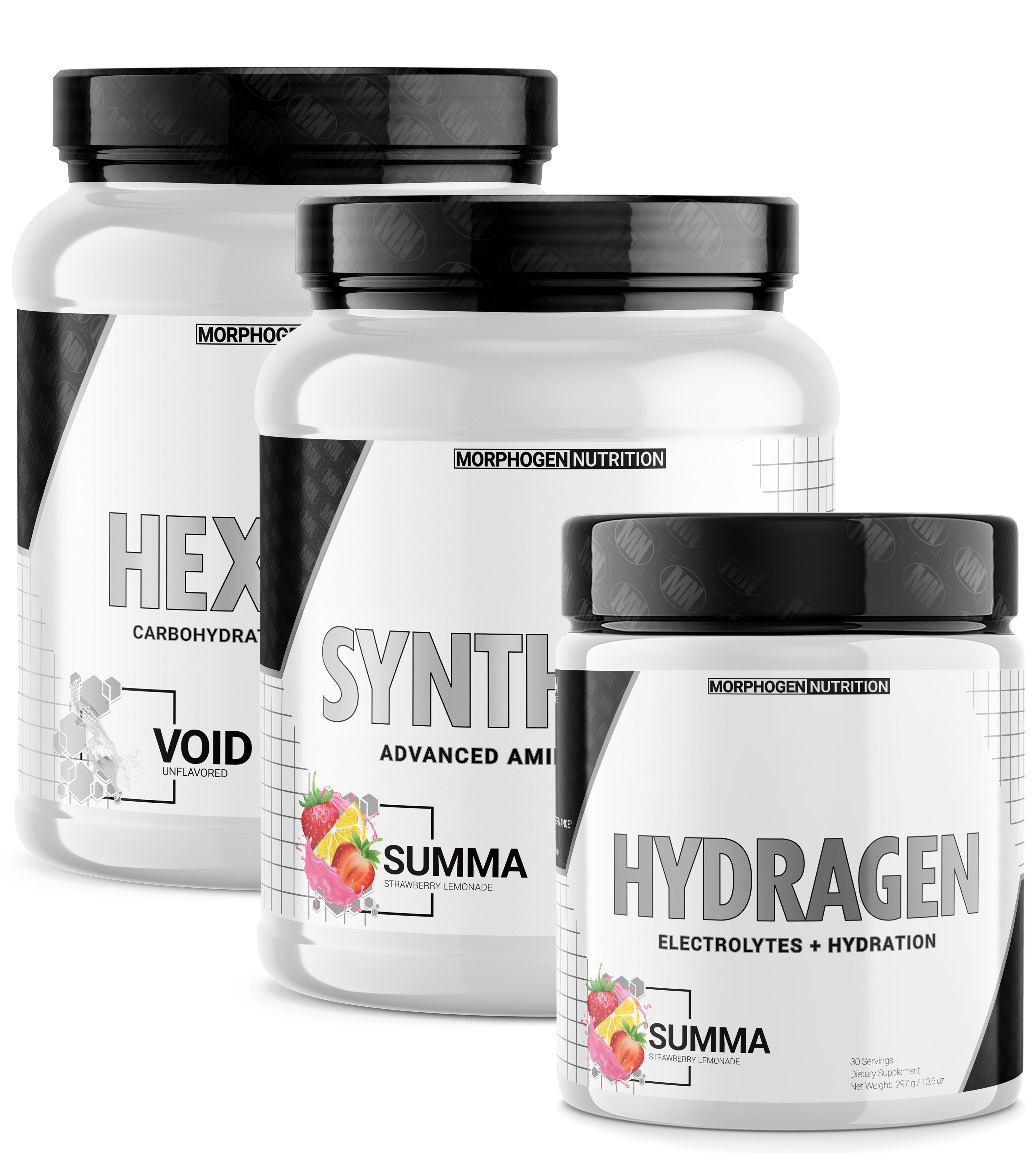
Morphogen Nutrition's Intra Workout Stack brings a total of 3 grams of taurine and tons of other amino acids and electrolytes
Stacking
This is an all-out amino acid formula, but one thing that's not in here are electrolytes. If you're seeking more mineral support and tend to sweat a lot when training, then Morphogen Nutrition Hydragen is the place to look. It's a sodium-heavy hydration product built for athletes who sweat!
And of course, it goes without saying that if you need a wild pre-workout supplement, Alphagen is where it's at - with a whopping dose of L-Tyrosine, an amino acid that's not in Synthegen. What a stack!
Conclusion: An amino acid supplement to hang your hat on
Synthegen is one of those products that we recommend to anyone who's going big and not sure what to take next. A supplement where you can't go wrong. It simply covers so many bases, and nothing is underdosed. On top of the standout methionine dose, we have enough tryptophan to claim a solid serving niacin - you almost never see either of these, but Morphogen loaded up both.
Seemingly simple changes can have huge implications for a formula's effectiveness. We think including taurine -- another ingredient you can't go wrong with -- is one of these, as is its 2 gram dose of taurine. We hope to see this practice become more common, and are glad that Morphogen is helping lead the way to a bigger standard taurine dose.
Carnitine and ornithine are also good choices, ornithine in particular – not because it's necessarily more effective than carnitine, but because we think it's a highly underrated ingredient.
The purpose of an intraworkout supplement, after all, is to help you maximize returns on the energy you invest in your workouts, so having fat burners like carnitine and boosting HGH through ornithine adds a lot of value for the consumer.
At the same time, Morphogen chose their ingredients carefully – carnitine, ornithine, and taurine are all highly effective, which allows them to keep the formula relatively simple and EAA-focused, without getting too bloated or expensive.
Morphogen Nutrition SyntheGEN – Deals and Price Drop Alerts
Get Price Alerts
No spam, no scams.
Disclosure: PricePlow relies on pricing from stores with which we have a business relationship. We work hard to keep pricing current, but you may find a better offer.
Posts are sponsored in part by the retailers and/or brands listed on this page.
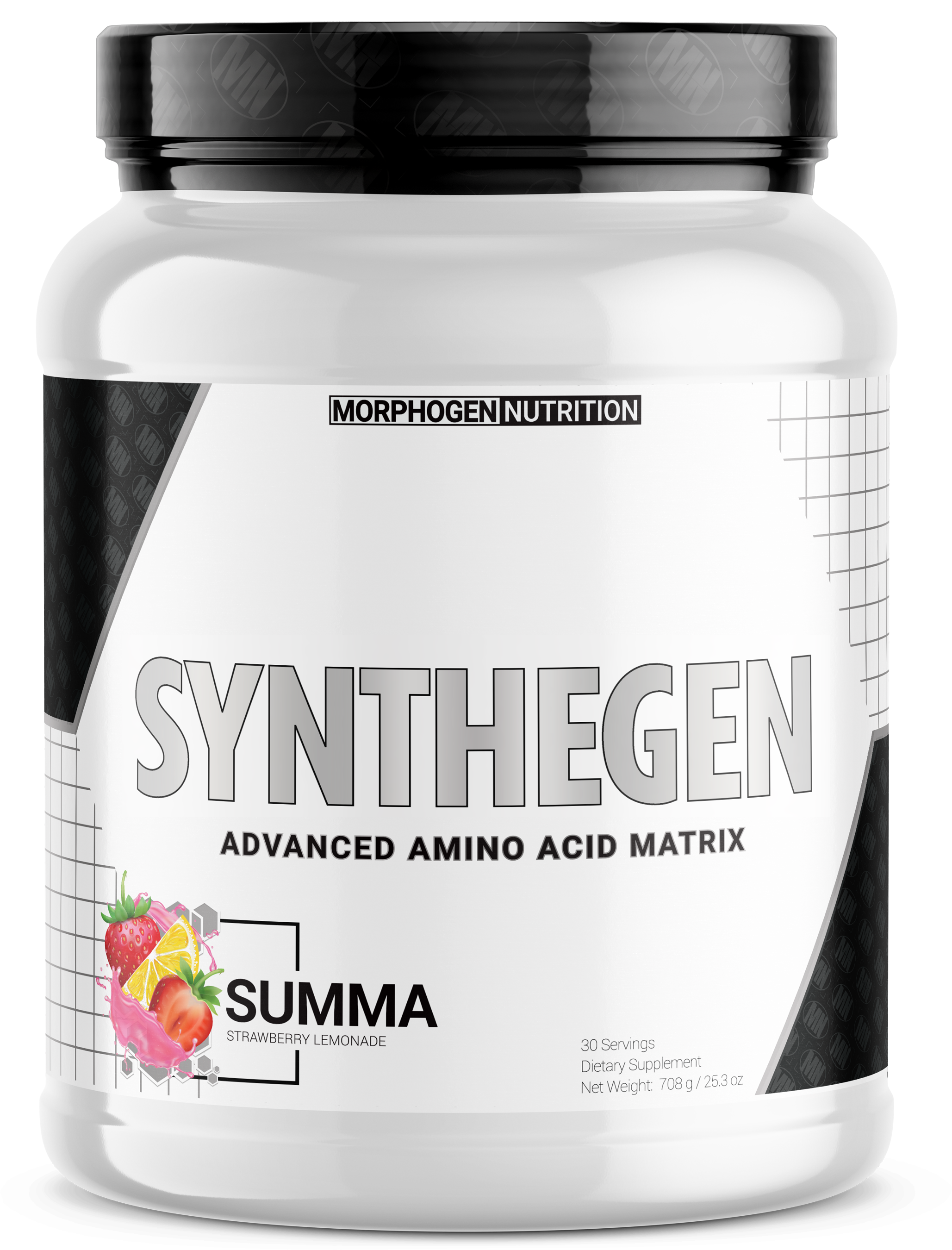
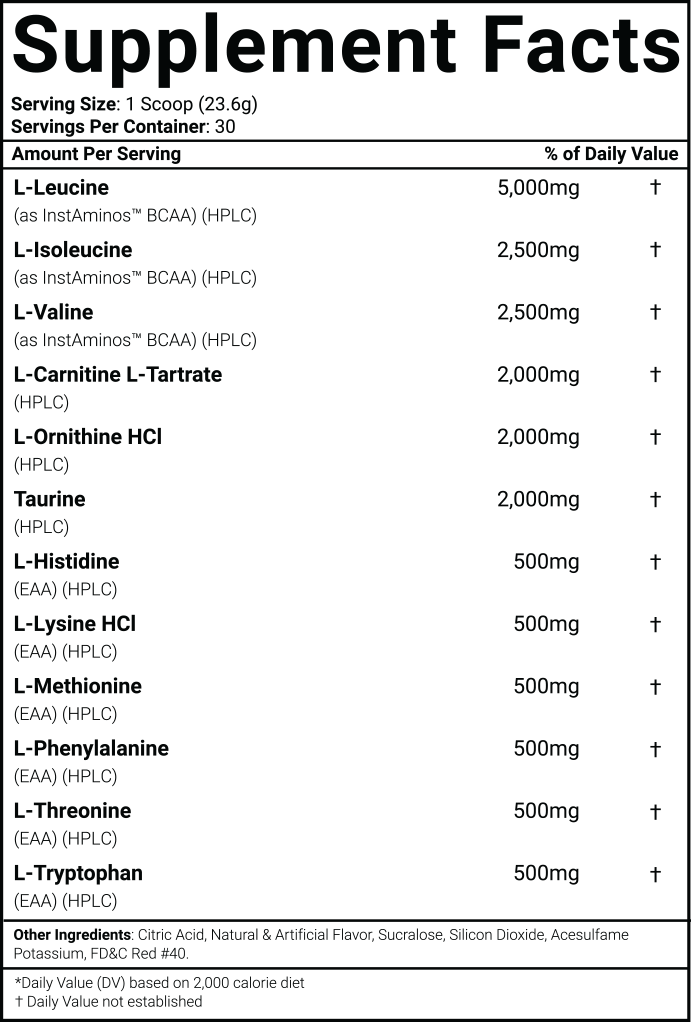
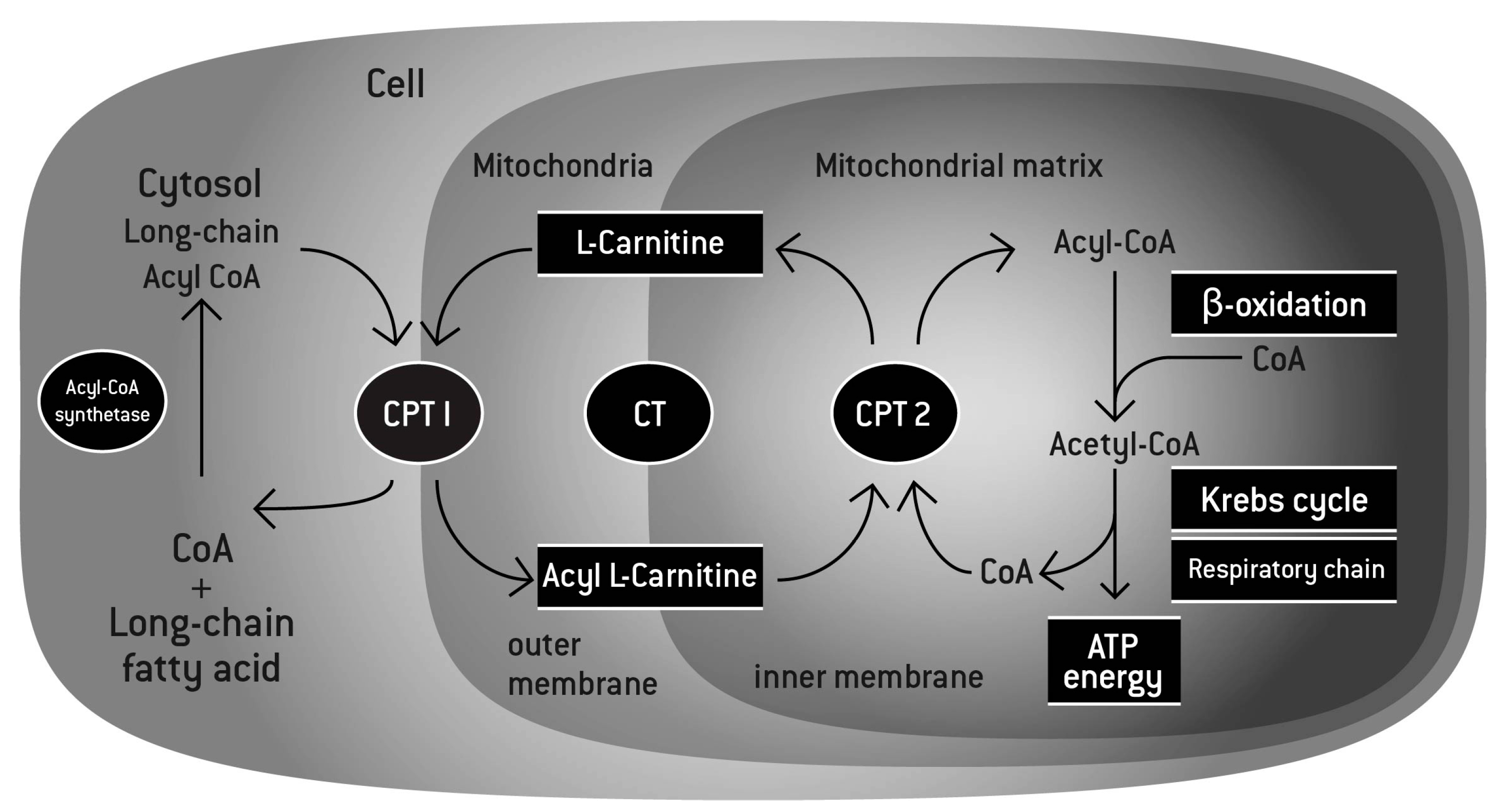
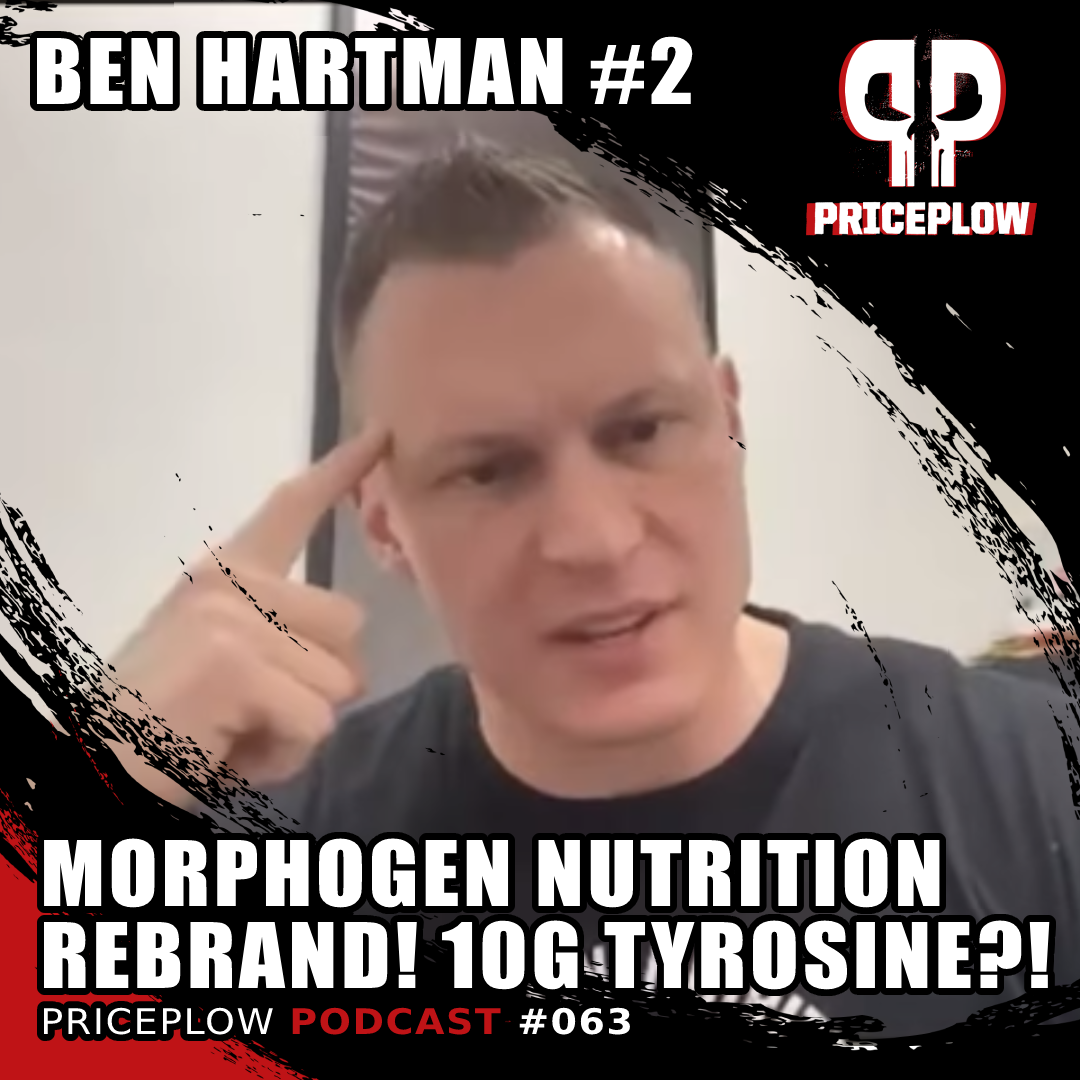
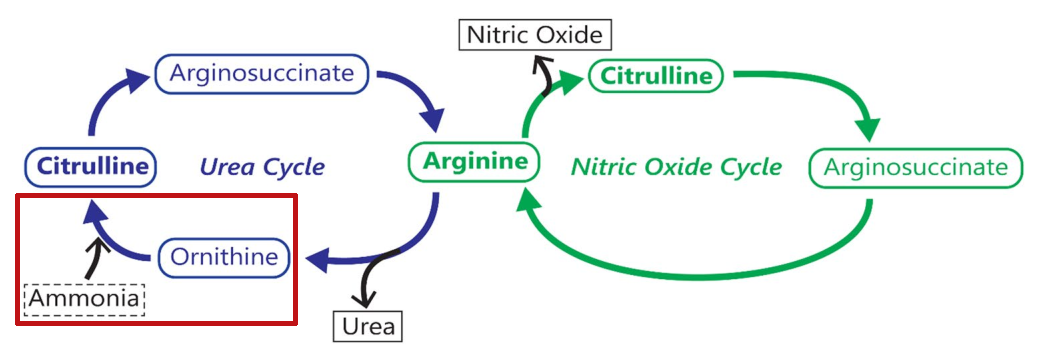
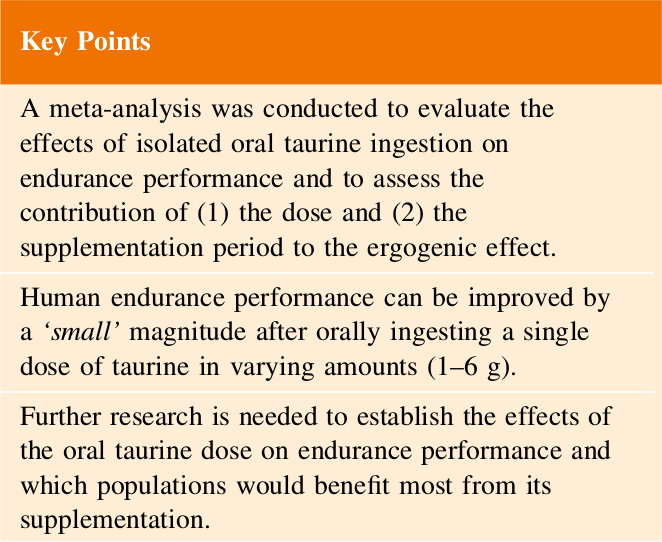
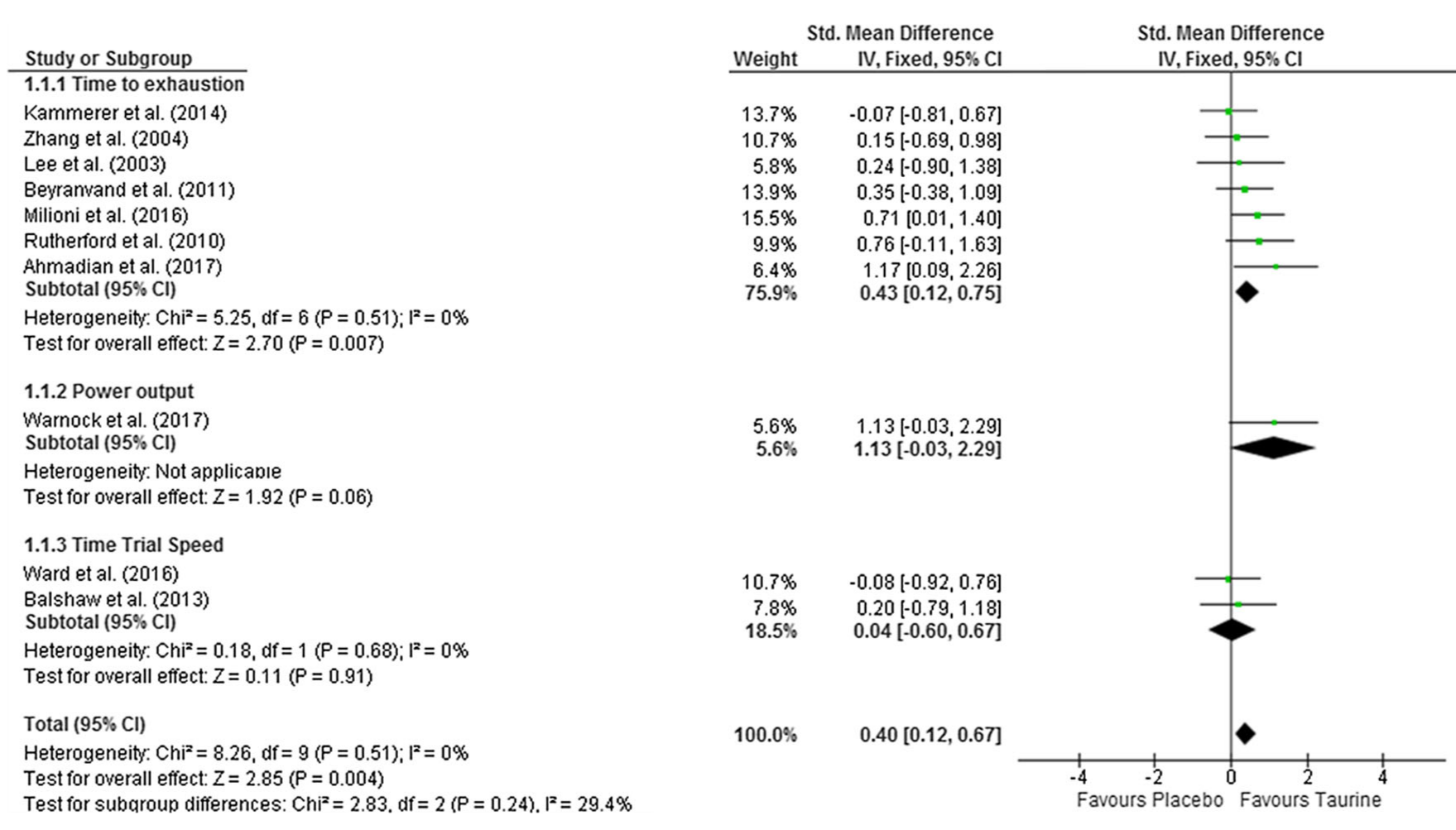
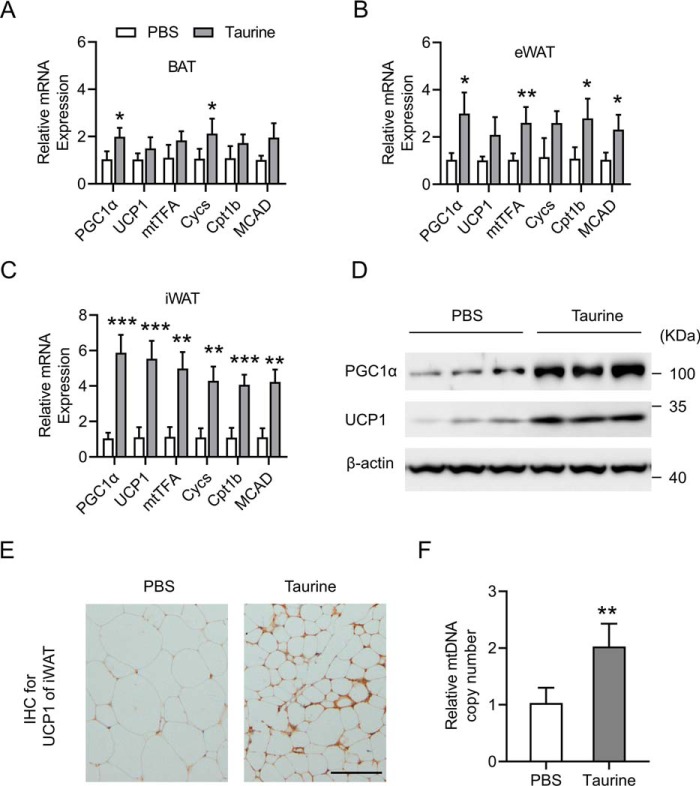
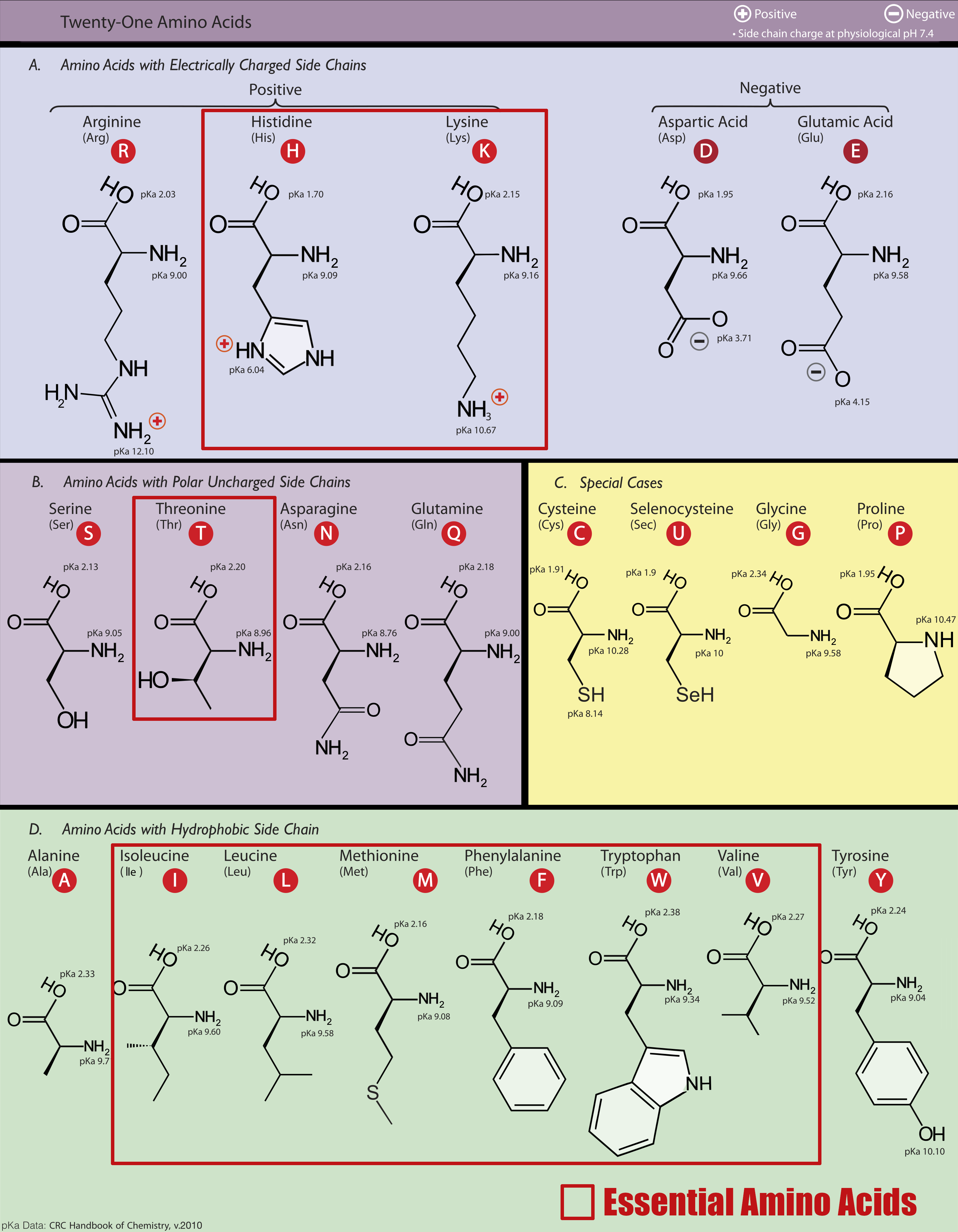
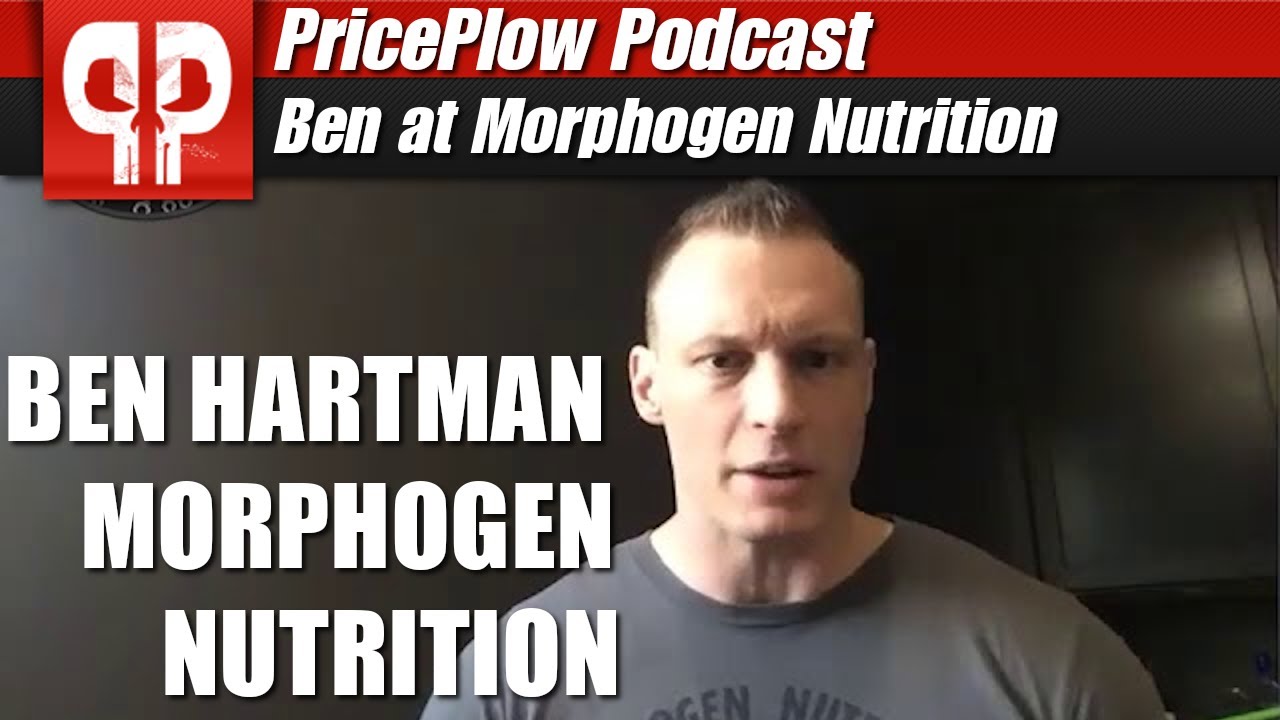
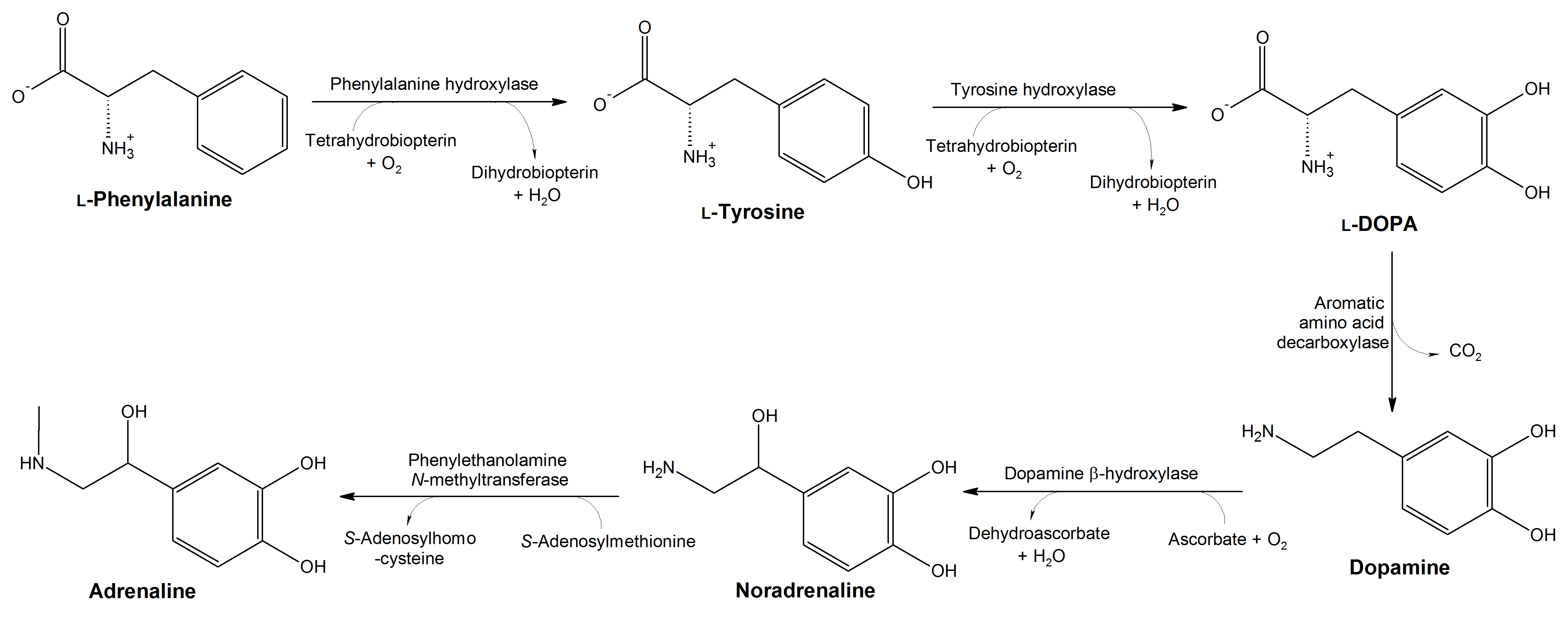
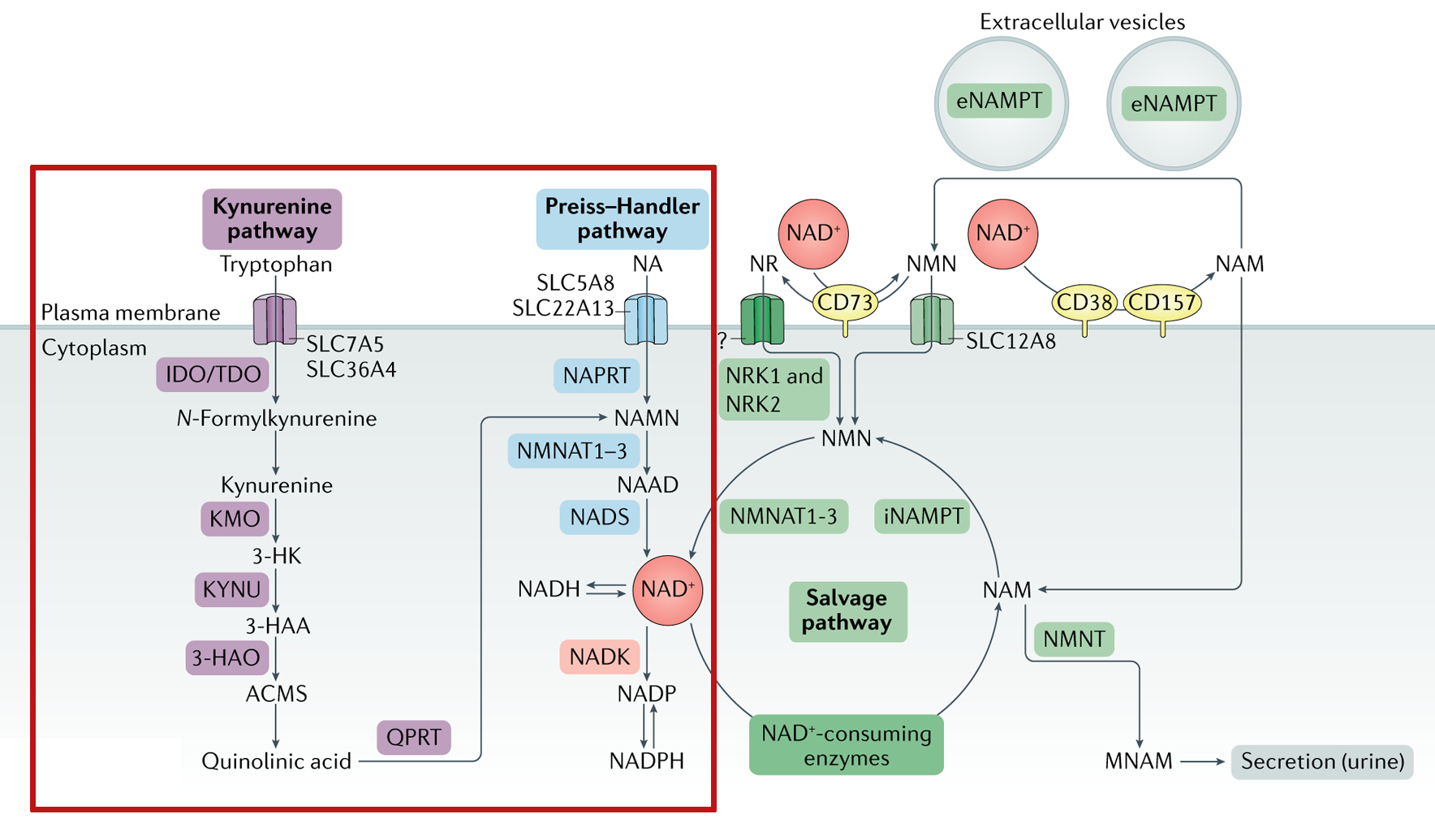
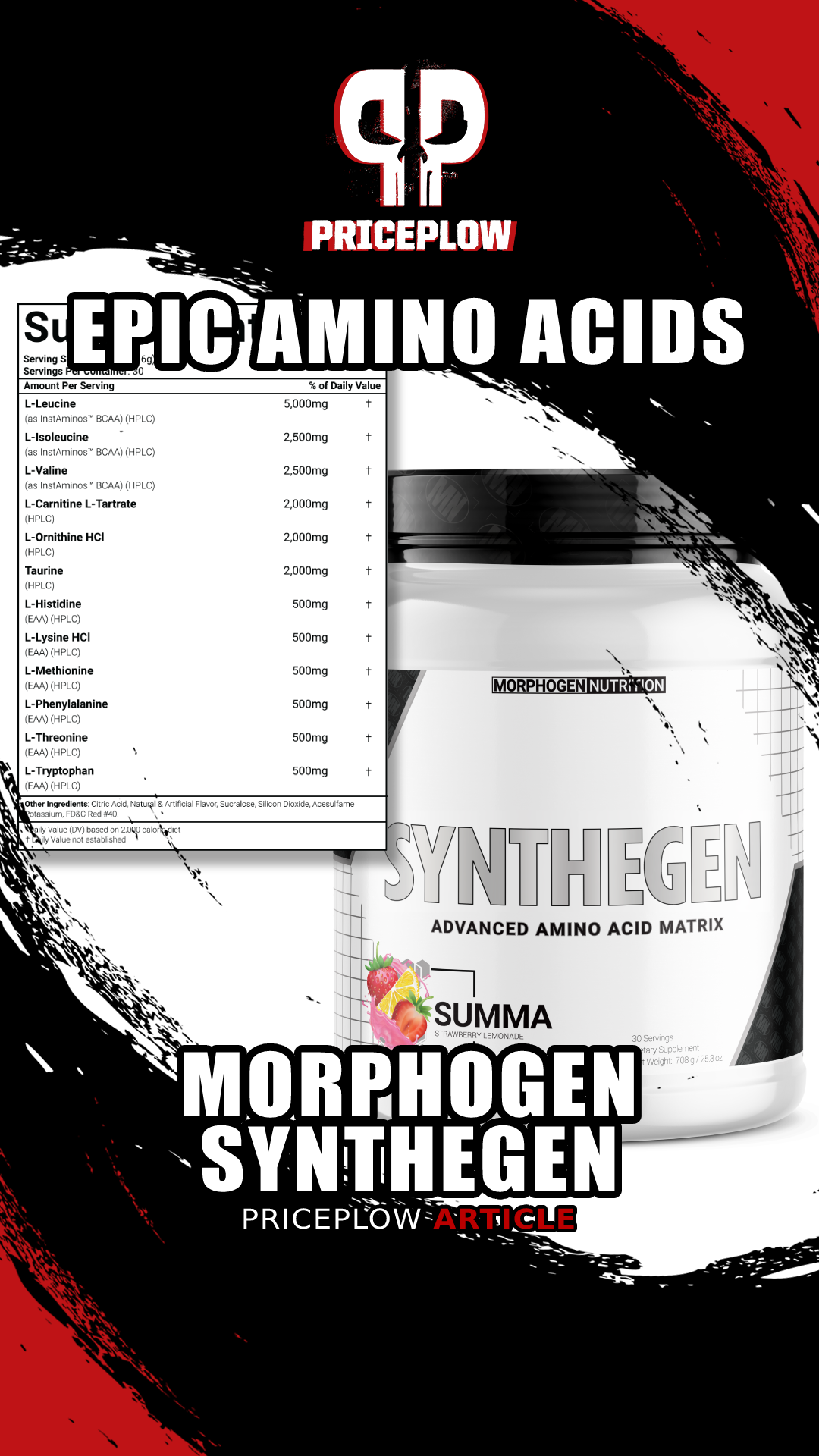


Comments and Discussion (Powered by the PricePlow Forum)